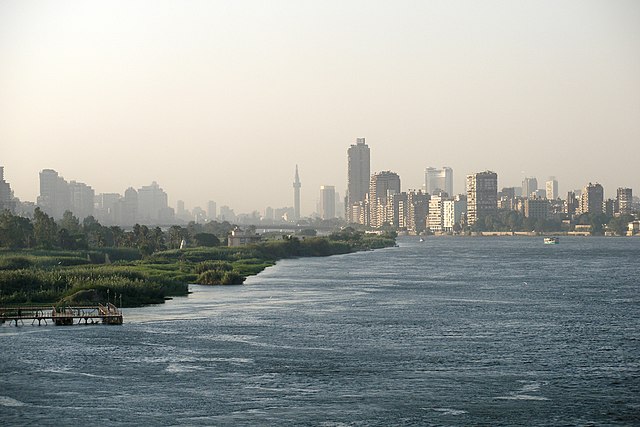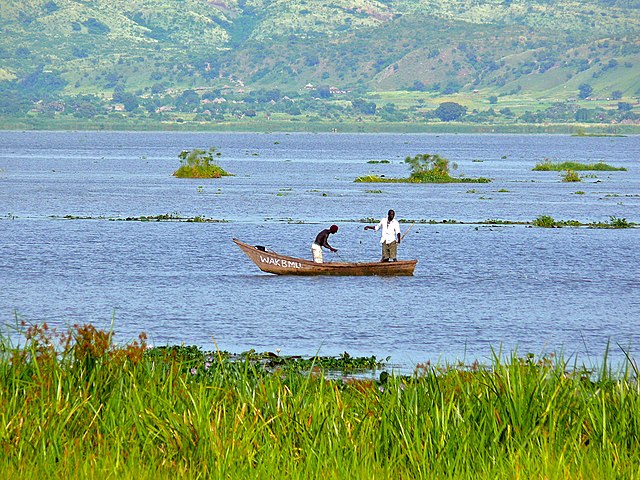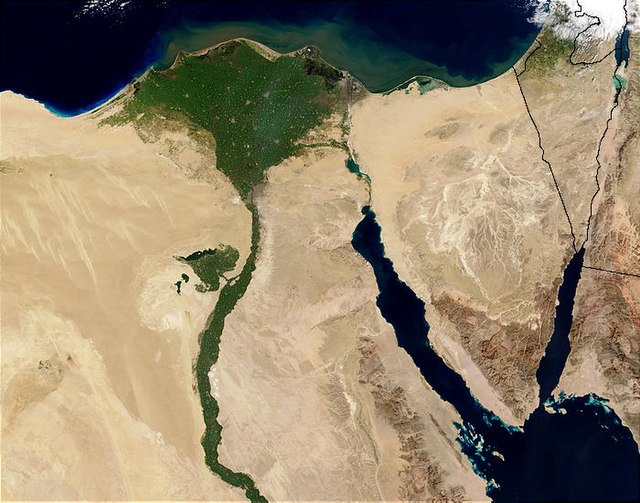The Aswan Dam, or more specifically since the 1980s, the Aswan High Dam, is one of the world's largest embankment dams, which was built across the Nile in Aswan, Egypt, between 1960 and 1970. When it was completed, it was the tallest earthen dam in the world, eclipsing the United States' Chatuge Dam. Its significance largely upstaged the previous Aswan Low Dam initially completed in 1902 downstream. Based on the success of the Low Dam, then at its maximum utilization, construction of the High Dam became a key objective of the new regime the Free Officers movement of 1952; with its ability to better control flooding, provide increased water storage for irrigation and generate hydroelectricity, the dam was seen as pivotal to Egypt's planned industrialization. Like the earlier implementation, the High Dam has had a significant effect on the economy and culture of Egypt.
The Aswan High Dam as seen from space
Egyptian President Nasser and Soviet leader Nikita Khrushchev at the ceremony to divert the Nile during the construction of the Aswan High Dam on 14 May 1964. At this occasion Khrushchev called it "the eighth wonder of the world".
Gamal Abdel Nasser observing the construction of the dam, 1963
A view from the vantage point in the middle of High Dam towards the monument of Arab-Soviet Friendship (Lotus Flower) by architects Piotr Pavlov, Juri Omeltchenko and sculptor Nikolay Vechkanov
The Nile is a major north-flowing river in northeastern Africa. It flows into the Mediterranean Sea. The Nile is the longest river in Africa and has historically been considered the longest river in the world, though this has been contested by research suggesting that the Amazon River is slightly longer. Of the world's major rivers, the Nile is one of the smallest, as measured by annual flow in cubic metres of water. About 6,650 km (4,130 mi) long, its drainage basin covers eleven countries: the Democratic Republic of the Congo, Tanzania, Burundi, Rwanda, Uganda, Kenya, Ethiopia, Eritrea, South Sudan, Sudan, and Egypt. In particular, the Nile is the primary water source of Egypt, Sudan and South Sudan. Additionally, the Nile is an important economic river, supporting agriculture and fishing.
Nile in Cairo, Egypt
Spring at Lake Victoria
White Nile in Uganda
Nile Delta from space








